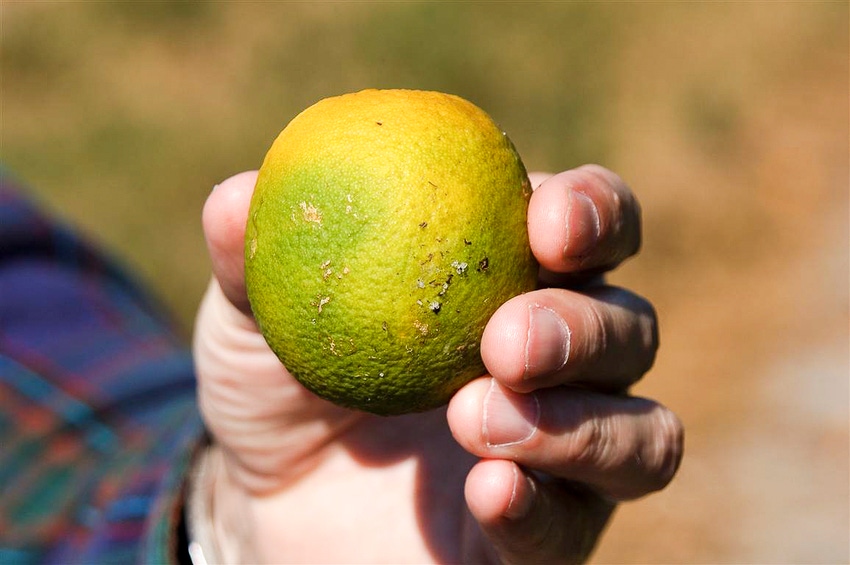
California’s risk-based assessments of citrus trees in the San Gabriel Valley (Los Angeles County) continue to turn up positive finds of Huanglongbing (HLB) in non-commercial citrus trees. To date, 46 trees have been confirmed and removed by state officials.
Since mid-2015, 45 trees in San Gabriel and Hacienda Heights have tested positive for the disease. California’s first HLB find was in Hacienda Heights in 2012.
Most of these HLB-positive trees have been found in or around the city of San Gabriel. Two finds were discovered in nearby Hacienda Heights.
The risk-based assessments used by state officials are based on university research that gives researchers and regulators a better target to pinpoint the disease, rather than simply sampling every tree in a region as large as southern California. As part of their activities, California Department of Food and Agriculture inspectors now pull more tree samples from plant materials in high-risk areas, which have led to the increase in HLB discoveries.
The finds have also come with regulatory quarantines. Currently, two quarantine zones for HLB are established in the southern California counties of Los Angeles and Orange.
Alyssa Houtby, spokesperson for California Citrus Mutual, says some of those trees did not exhibit the classic visible symptoms of mottled leaves or misshapen fruit common to citrus greening disease. This is a concern for commercial growers inspecting their groves for possible disease as there is currently no “quick-test” for the disease.
More commonly known as citrus greening disease, HLB is a fatal disease in citrus caused by bacteria that can be moved around by the Asian citrus psyllid (ACP). By feeding on an infected tree, the ACP can move or “vector” the disease as it feeds on other citrus trees.
CDFA crews continue to collect plant and pest samples in hot-spots across southern California looking for the disease. The goal is to remove infected trees and prevent the disease from spreading, particularly to the commercial citrus industry, which in California is valued at over $2 billion dollars.
In 2016 alone, the CDFA collected nearly 50,000 plant samples and nearly 80,000 ACP samples for HLB testing. The only currently-approved test for HLB in plant or pest materials is the Polymerase Chain Reaction or “PCR” test. The test amplifies selected sections of DNA or RNA for analysis, and is the only federally-recognized means to test for HLB.
About the Author(s)
You May Also Like






